
Enhancing wheat Rubisco activase thermostability by mutagenesis of conserved residues from heat-adapted species
Maria Grazia Annunziata
Max Planck Institute of Molecular Plant Physiology, 14476 Potsdam-Golm, Germany.
Annunziata@mpimp-golm.mpg.de
ORCID ID: 0000-0001-8593-1741
Rubisco (ribulose-1,5-bisphosphate carboxylase/oxygenase) is the central enzyme of photosynthetic carbon assimilation in the…
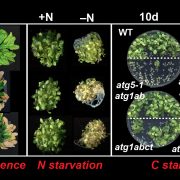
How Autophagy Is Activated under Extended Dark Conditions
Huang et al. uncover how SnRK1 kinase complex promotes the autophagy activity by phosphorylating ATG6 under prolonged dark conditions. Plant Cell https://doi.org/10.1105/tpc.19.00066
By Huang Xiao and Faqiang Li, College of Life Sciences, South China Agricultural University, Guangzhou, China
Background:…
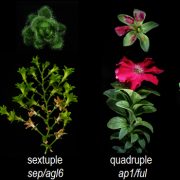
Comparing genes that govern flower development in Petunia and Arabidopsis: Evolution made a mess!
Morel et al. investigate AP1/SEP/AGL6 MADS-box transcription factor functions in Petunia. Plant Cell https://doi.org/10.1105/tpc.19.00162
By Michiel Vandenbussche
Background: The ABCE model is a simple genetic model that explains how the different floral organs in the flower (sepals, petals, stamens…
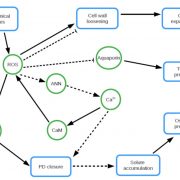
Review: Interplay between turgor pressure and plasmodesmata during development (J Exp Bot)
Plasmodesmata, small cytoplasmic channels connecting adjacent cells, allow small molecules to move and redistribute information and resources. Plasmodesmatal aperture is highly regulated, which is crucial to development and defense. Hernández-Hernández et al. review the contribution of turgor pressure…
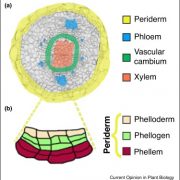
Review. The development of the periderm: the final frontier between a plant and its environment (COPB)
Campilho et al. have written an interesting review about the molecular basis of periderm development. During secondary growth (increase in girth) of most gymnosperms and dicots, the outer epidermal layer is gradually replaced by the periderm, which facilitates gas exchange and defense. Periderm is composed…
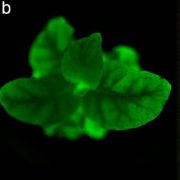
Plants with self-sustained luminescence (bioRxiv)
Nothing beats being able see gene expression in real time and space. In recent years, plant biologists have made great strides in understanding plants by using the visual reporters GUS, green fluorescent protein (and other fluorescent proteins) and luciferase. Each of these requires either a substrate…
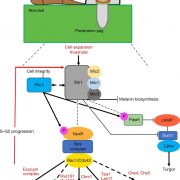
A sensor kinase controls turgor-driven plant infection by the rice blast fungus ($) (Nature)
Magnaporthe oryzae, the causal organism of blast disease in rice and wheat, is the most devasting pathogen in rice production. During infection, it develops a germ tube that forms an infection structure called the appressorium. Through septin-mediated reorganization of the cytoskeleton, a high amount…
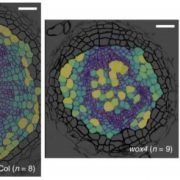
Transcriptional regulatory framework for vascular cambium development in Arabidopsis roots ($) (Nature Plants)
Plant vascular tissues continue to proliferate post-embryogenesis via the cambium, a lateral meristem. Until recently the transcription factors regulating meristem maintenance and promoting differentiation were still unknown. In this paper, Zhang et al. identified multiple transcription factors using…

Optimal levels of PLETHORA2 for root regeneration capacity (Cell Reports)
Plants can regenerate organs after damage, or even regenerate a whole plant. The regeneration efficiency is different across the organism. In this study, Durgaprasad et al. studied the factors that determine regeneration competence across Arabidopsis roots. They focussed on PLETHORA2 (PLT2), a gene involved…

